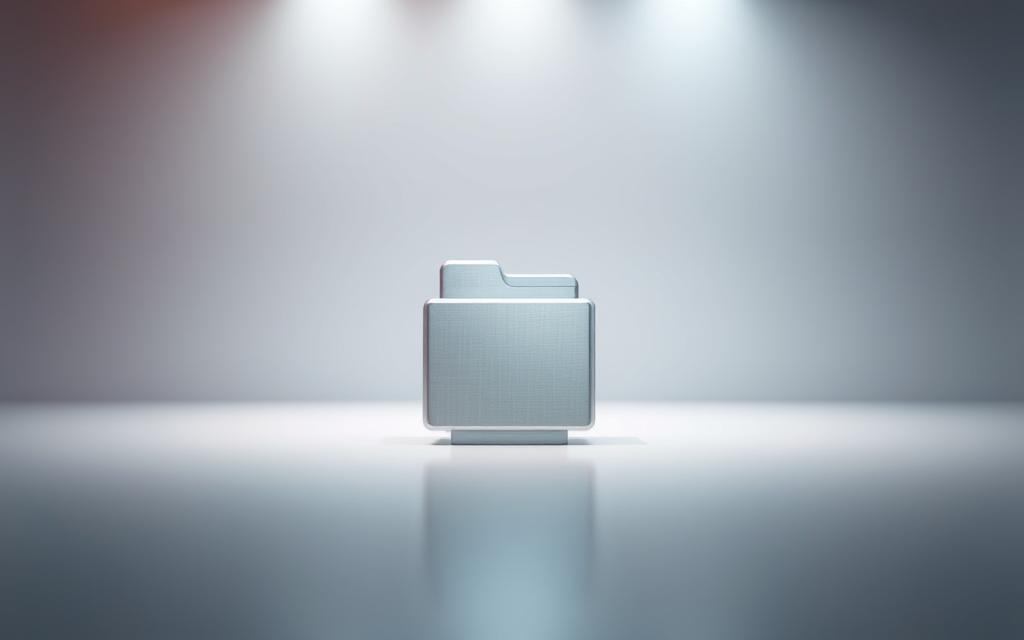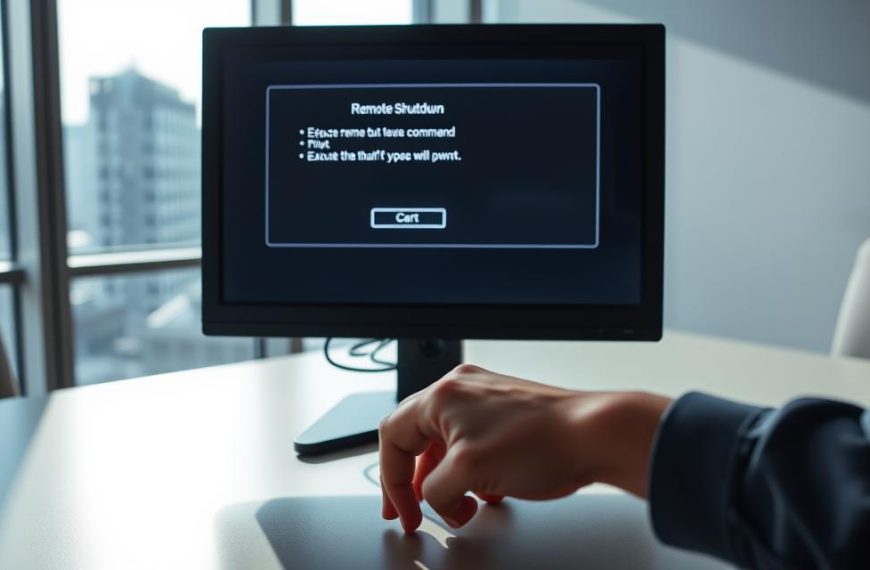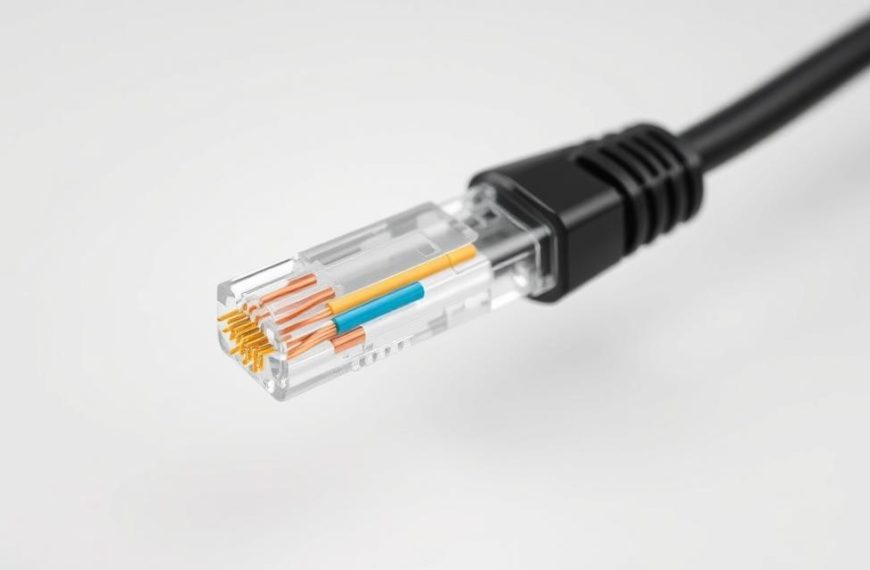Connecting to shared storage makes work easier for everyone. It lets you access files from a Windows network storage or work together through a macOS server connection. This guide shows you how to do it, no matter your computer.
Having a central place for files is great for teams. It helps when you’re getting ready for exams or dealing with client documents. Shared folder access means you can edit files together without any problems. It’s perfect for working with different computer systems.
We’ve made it easy to follow, using tips from IT experts and remote workers. You’ll learn how to set up permissions, fix connection issues, and keep your files safe. Most people can do it in under 10 minutes, no matter their tech skills.
We’ve focused on making it clear for Windows 11 and macOS Ventura. We’ve covered common issues like firewalls and SMB settings. By the end, you’ll know how to use File Explorer or Finder to get to your network files, without any extra software.
Understanding Network Drives and Their Benefits
Today, both workplaces and homes use shared digital resources. Network drives are central hubs for files, making them accessible to users across systems. This solves the problem of “siloed storage” in old computing setups.
What is a Network Drive?
A network drive is like a virtual hard disk on your local network. It’s not a physical storage like a hard drive but connects via SMB or NFS. NAS devices are special hardware for this, with features from simple sharing to advanced redundancy.
| Home NAS (wikiHow Example) | Business NAS (NETGEAR) |
|---|---|
| Stream films to smart TVs | Multi-department file access |
| Backup family photos | ProSUPPORT 24/7 maintenance |
| Share printers locally | Automatic failover systems |
Key Advantages of Using Network Storage
Using network drives brings big benefits:
- Simplified access: Employees can open files directly from shared drives, not via email attachments
- Version control: Teams always work on the latest document version
- Cost efficiency: It reduces the need for duplicate storage hardware
“Centralised file management cuts average document retrieval time by 40% in small businesses,” notes a NETGEAR case study.
Common Use Cases for Mapped Drives
There are many uses for network drives:
Home users set up network drives for media streaming or backing up mobile devices. wikiHow tutorials show how family members can access recipe databases or holiday videos from any room.
Business teams use mapped drives for teamwork. Marketing teams might store campaign assets in shared folders. Accounting teams keep financial records safe with role-based permissions.
Essential Preparations Before Mapping
Getting network drives to work right needs careful planning. Skipping these steps can lead to problems. Here are three key areas to focus on for a smooth setup.

Network Requirements Checklist
First, make sure you have these technical basics:
- Network discovery enabled on all devices
- Current SMB protocol version (preferably 3.1.1 for security)
- Stable LAN connection with ≥100Mbps bandwidth
- Router firmware updated to latest version
For big companies, check if Active Directory and DNS are set up right. Also, look at firewall configuration to make sure it lets file-sharing through (TCP 445, 139).
| Protocol | Port | Use Case |
|---|---|---|
| SMB | 445 | Windows file sharing |
| NFS | 2049 | Unix/Linux systems |
| FTP | 21 | Cross-platform transfers |
Required Login Credentials
Right login details are key for safe access:
- Domain account with read/write privileges
- Local admin rights for initial setup
- Two-factor authentication for cloud-connected drives
In Active Directory setups, check group policy settings. Make sure they don’t block drive mapping. Always use encrypted login info for automated access.
Verifying Shared Folder Permissions
Here’s how to set up permissions for safety:
- Check share-level access rights
- Look at NTFS/file system permissions
- Test with non-admin user accounts
Don’t forget, firewall configuration mistakes can look like permission problems. For business networks, work with IT to make sure access controls match company policies.
How to Add a Network Drive to Your Windows Computer
Windows lets you connect to network drives in several ways. You can use the graphical File Explorer or the command-line net use command. This guide is for everyone, from casual users to IT experts.
1. Accessing Network Settings in Windows 10/11
Start by pressing Windows key + E to open File Explorer. Go to the ‘This PC’ section on the left:
- Click ‘Computer’ at the top
- Choose ‘Map network drive’
- For other protocols, click ‘Connect to WebDAV, FTP or network location’
For advanced users, open Command Prompt. Type control.exe /name Microsoft.NetworkAndSharingCenter to get to sharing settings.
2. Mapping the Drive Using File Explorer
In the mapping box:
- Pick a drive letter (not A: or B:)
- Enter the path as
\\SERVERNAME\SharedFolder - Check ‘Reconnect at sign-in’ for always-on connections
For PowerShell, use:
New-PSDrive -Name "X" -PSProvider "FileSystem" -Root "\\SERVER\Share" -Persist
3. Configuring Automatic Reconnection
Windows might lose mapped drives after updates. Use Registry Editor for persistent connections:
- Type
regeditin the search bar - Go to
HKEY_LOCAL_MACHINE\SYSTEM\CurrentControlSet\Control\NetworkProvider - Create a new DWORD value: RestoreConnection=1
4. Troubleshooting Common Windows Errors
| Error Code | Solution | Tool Required |
|---|---|---|
| 0x80070035 | Enable SMB 1.0 in Windows Features | Control Panel |
| Login Failed | Reset credentials via Credential Manager | Windows Security |
| IP Conflict | Renew DHCP lease in Command Prompt | ipconfig /release |
For error code 0x80070035, Microsoft suggests turning on old protocols temporarily. This helps while updating drivers.
Connecting Network Storage on macOS Systems
Mac users have tools that make setting up network drives easy. They offer top security and are simple for home users. You can access shared folders via SMB for working with different platforms or use AFP for Time Machine backups.
Features like Keychain integration and Bonjour service make things easier. They help keep your data safe while making it easy to access.
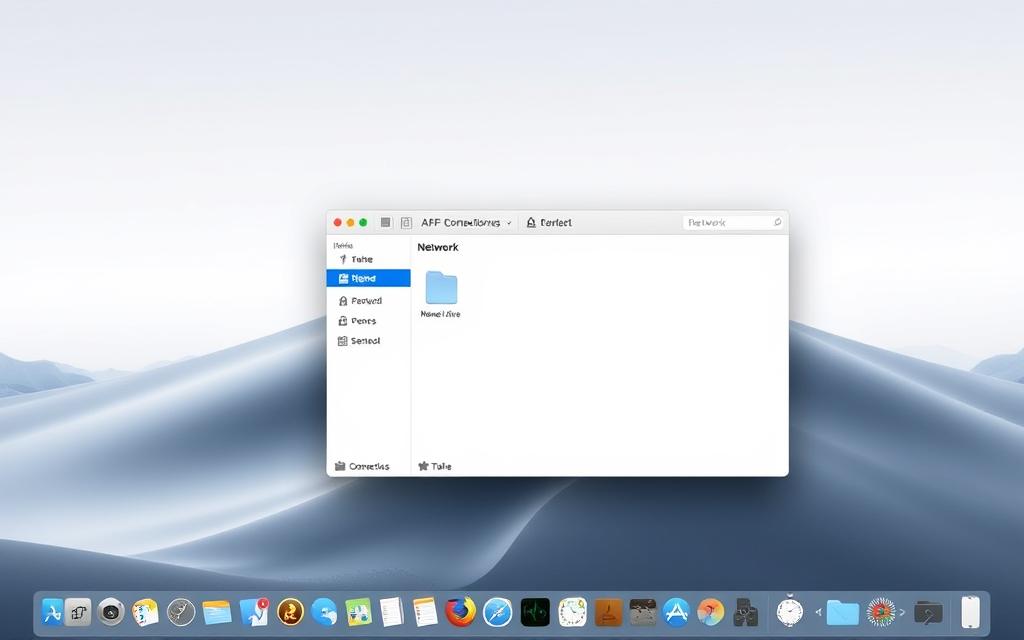
1. Using Finder to Mount Network Drives
Here’s how to start:
- Open Finder and select Go > Connect to Server from the menu bar
- Enter the server address using
smb://orafp://protocol prefixes - Choose Keychain integration when prompted to save credentials
AFP connections are better for Time Machine backups. NETGEAR says SMB3 is best for mixed-OS environments.
2. Creating Persistent Connections in macOS
Keep your network connections stable with these tips:
- Enable Reconnect at login in the drive’s Get Info panel
- Add server addresses to Login Items in System Preferences
- Use Automator to create mount-triggering workflows
Bonjour service finds devices on local networks. But, some setups need manual DNS configuration.
3. Resolving Mac-Specific Connection Issues
Fix common macOS problems with these steps:
- Reset Keychain permissions if credentials stop working
- Check Sharing & Permissions when encountering write errors
- Disable conflicting Time Machine backups during large transfers
For more complex issues, try Terminal commands like ping and nslookup. If drives keep disconnecting, adjust energy saver settings.
Optimising Network Drive Performance
Improving network drive performance involves technical tweaks and good organisation. It’s about making sure your network runs smoothly, whether it’s for personal media or work files. Adjusting how data flows, choosing the right protocols, and organising folders can make a big difference. Tests show that these steps can boost speeds by up to 40%.
Bandwidth Management Techniques
Quality of Service (QoS) settings are key to avoiding network jams. NETGEAR’s guides suggest giving storage traffic priority. Here are some tips:
- Set a minimum bandwidth for storage protocols
- Do big transfers when it’s quiet
- Use tools to stop data from using too much bandwidth
Big companies often use two networks for storage and web. Home users can use media prioritisation on their routers.
Choosing Optimal File Transfer Protocols
The protocol you choose affects speed and security. SMB3 encryption is better than old FTP for Windows, giving:
| Protocol | Speed | Security |
|---|---|---|
| SMB3 | 1.2GB/min | 256-bit AES |
| FTP | 850MB/min | Basic SSL |
Maryam’s tests show SMB3 is 15% faster for small files. For Linux, NFSv4 is better at caching metadata than SMB.
Maintaining Organised Folder Structures
A messy directory can slow things down. Follow these RAID tips:
- Keep operating systems and data on different drives
- Use SSDs for faster storage
- Move old files to secondary storage every quarter
Tools can move old files to save space. Regularly check who can access files to stop clutter.
Security Best Practices for Network Drives
Keeping network storage safe needs a mix of digital and physical protection. Companies should use advanced tools like Active Directory. At the same time, home users can use encrypted containers. This part talks about key steps to protect your data from cyber threats.
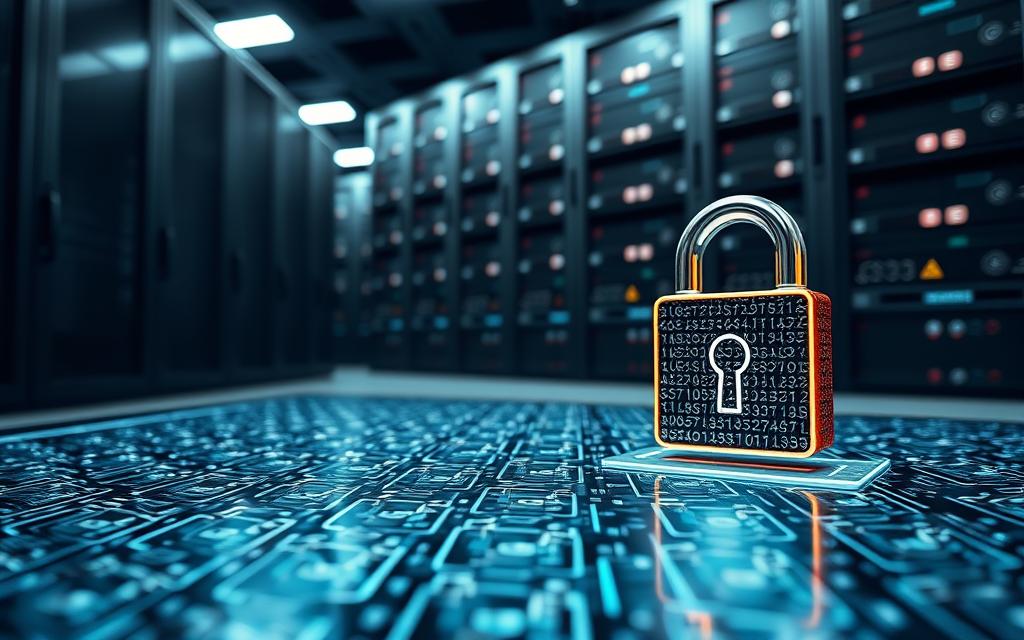
Implementing Access Controls
Role-Based Access Control (RBAC) policies are key to managing network drives securely. Set up permissions so users can only see files they need. For example, marketing teams shouldn’t see engineering plans. Use Active Directory groups in Windows to make permission management easier.
Here are some access control tips:
- Use the least privilege principle for shared folders
- Check permissions every quarter with OS tools
- Use multi-factor authentication for admin accounts
Businesses with many users should look into group policy mapped drives best practice. Home users can use manual permissions in File Explorer or System Preferences on Mac.
Encrypting Sensitive Data
Microsoft’s AES-256 BitLocker encryption is strong for Windows network drives, even better with TPM chips. Mac users should use FileVault. VeraCrypt containers are good for encrypted storage that works on any OS.
Here are some encryption tips:
- Keep recovery keys away from encrypted devices
- Change encryption passwords every six months
- Use certificates for enterprise security
Regular Backup Strategies
Use incremental backups with tools like Windows Backup or Time Machine. This saves space and time. Follow the 3-2-1 rule for data safety. Cloud services like OneDrive offer automatic backups, while businesses might prefer NAS-to-NAS replication.
Important backup tips:
- Test backups every three months
- Keep backup accounts separate from main networks
- Use file integrity monitoring for important shares
Recent advice says air-gapped backups are best against ransomware. Add real-time malware scanning on NAS for extra protection.
Conclusion
Network drives are key for managing data well in teams and across devices. This guide teaches you to work better in mixed work settings. It’s all about fast file access and teamwork.
Setting up network storage right makes work smoother. Whether it’s sharing big design files or working on financial reports together.
Want to get better at this? Microsoft’s DFS namespaces and cloud services like AWS or Google Drive are great for advanced skills. CompTIA’s Network+ and Security+ certifications teach you about remote access and data safety. Maryam Ahmed, a senior IT instructor, says these are great for team managers.
Getting hands-on experience is important. Try setting up a home lab with FreeNAS or Synology. Play with permission settings and backups. See how different file transfer methods work.
These exercises help you feel confident in handling big storage systems.
Keep up with security as threats change. Use network drive encryption and tools like Microsoft Authenticator for extra safety. Do permission checks every few months with Windows Server’s Access Enumeration.
Good network drive management helps with daily tasks and long-term goals. These skills are vital in today’s tech world. Start using these tips now to make your work easier and keep your business safe.

